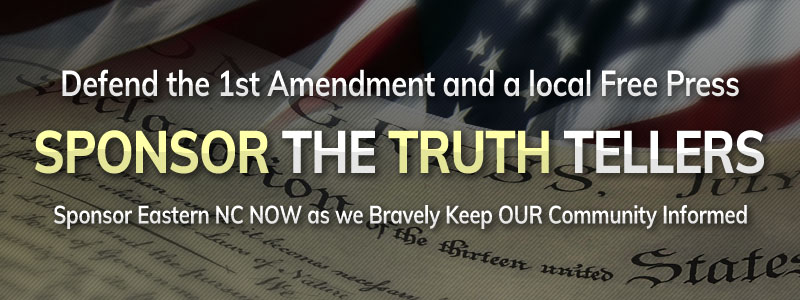The Human Touch Revealing All that is Real
Part IV - ANATOMY of a SUPREME COURT CASE: District of Columbia v. Heller (2008)
DVD: "In Search of the Second Amendment (A Documentary)," produced and directed by David T. Hardy (2006). Second Amendment Films LLC
United States v. Miller, 307 U.S. 174 (1939)
District of Columbia v. Heller, 554 U.S. 570 (2008)
McDonald v. Chicago, 561 US 742 (2010)
"North Carolina's Ratification," US Constitution - https://www.usconstitution.net/rat_nc.html
Resolutions of the Provincial Congress of Virginia (Patrick Henry) regarding the militia, March 23, 1775 - http://avalon.law.yale.edu/18th_century/res_cong_va_1775.asp
George Mason, the Virginia Declaration of Rights. Referenced at: http://www.history.org/almanack/life/politics/varights.cfm
Virginia's Ratification of the Constitution, Elliott's Debates (June 25, 1788) - http://teachingamericanhistory.org/ratification/elliot/vol3/june25/
The proposed amendments to the Bill of Rights submitted by the State of Virginia (June 27, 1788) - http://teachingamericanhistory.org/ratification/elliot/vol3/june27/
APPENDIX:
THE ROOTS OF THE SECOND AMENDMENT (taken from Adam Winkler, "Gun Fight: The Battle Over the Right to Bear Arms in America." 2011, W.W. Norton & Company, NYC; pp. 99-105, and Diane Rufino, "The History of the Second Amendment Teaches Us its Meaning and Intent (Liberal Judges and Professors Do Not)," January 14, 2019].
The roots of the Second Amendment go back to the days of feudal/medieval England, to the Militia laws. Men in England, and sometimes even teen boys were required by law to have firearms and to be trained in their use should the King need to call up a militia. Henry VIII, who reigned from 1509 - 1547, lowered the age of the males required to be trained to use guns. Under his rule, fathers were required to train their sons from age 7 and older in the use of firearms. "Bring them up in shooting!" The King had no standing army and therefore the Militia Laws were very important. Citizens could be called up at any time by the King to form the militia and so they had to always be in a state of readiness. In other words, citizens had a DUTY to keep and bear arms.
One hundred fifty (150) years later, in 1689, with the English Bill of Rights, this medieval "duty" to keep and bear arms became an "indubitable right." (aka, an unquestioned right, a non-disputed right, a fundamental right, an inherent right). And the English Bill of Rights was a direct precursor or template to our US Bill of Rights.
How did this all happen?
Gun ownership transformed into a "right" during the tumultuous 17th century in England, and for understandable reasons. The transformation arose out of a conflict between King Charles I and Parliament. [Remember, Parliament is the so-called "people's house; this is one of the rights the people wanted King John to recognize in the Magna Carta. If they were to be taxed, they wanted to have representation in those decisions]. Parliament refused to tax the people to provide the funding for the wars that Charles wanted to fight and so Charles disbanded the Parliament. He did so several times. He went on to tax the people himself, obviously violating their right to representation. Eventually, in 1642, civil war broke out and certain members of Parliament (called a "rump" Parliament), led by Oliver Cromwell, brought charges against Charles for high treason. He was captured, tried, and beheaded in 1649. His sons, the future King Charles II and King James II had fled to France at the time. At this point the monarchy was abolished and a republic established (the commonwealth of England).
After Cromwell died and his son took over, rather than stability in England, there was mass chaos. The people, out of sheer desperation, asked Charles II to come back to England, assert his right to the throne, and rule, which he did. The monarchy was restored. But what did Charles come home to? He returned to a country that turned on his father; a country that beheaded him. He also returned to a country that was very well-armed. Almost immediately, he sought to disarm the subjects and control the bearing of arms. He instituted serious gun control measures, both on individuals and on manufacturers. Gun manufacturers had to report to the King how many guns they manufactured each week and who purchased them. There were controls on the importing of guns, licenses were required for subjects who needed to move weapons around the countryside, and subjects had to report if they were traveling with a firearm. In the year 1660, King Charles II issued a series of orders to disarm those citizens that he deemed were - or would be - political opponents. One particular act that Parliament passed, in 1662, was especially repugnant. It was the Militia Act of 1662 and it gave militia officers the power to disarm anyone they believed was likely to be an opponent of the Crown. And at first, the Act was actively enforced. In 1671, Parliament passed the Game Act, which proved to be the greatest control over ownership of firearms that England ever had. The Game Act listed a whole host of weapons that were prohibited for hunting, and at the head of that list was guns !
Charles II died and having produced no heirs, he was succeeded by his brother James II. James II was a Roman Catholic, which concerned a lot of people, most of whom were Protestant (they believed Catholics were agents of the Pope, who they suspected of still trying to regain influence over the English kingdom.). But that was tolerated because he had no sons and his two grown daughters (Mary and Anne) were both Protestants; there seemed no threat that he would re-establish Catholicism in England. [Diane Rufino, "The History of the Second Amendment Teaches Us its Meaning and Intent (Liberal Judges and Professors Do Not)," January 14, 2019].
Within months of King James II's ascension, two rebellions were launched to attempt to topple him from the throne. James was able to suppress them easily, but the experience led him to conclude that he needed a sizeable standing army to protect him from future rebellions. He also thought that he would be better served by an army that included some friendly Catholics. Even though it was against the law, he appointed Catholics to positions of authority within the military. The Archbishop of Canterbury, one of the most important figures in England, petitioned James to reconsider some of his policies but James responded by imprisoning him in the Tower of London. When members of Parliament objected to his conduct, James turned around and suspended Parliament for the rest of his reign. He was within his recognized authority as King to do so, but the controversial move inspired his opponents to plot to have his reign end prematurely. [Adam Winkler, "Gun Fight: The Battle Over the Right to Bear Arms in America," pg. 100]
To lower the risk of a rebellion, James decided to take advantage of certain laws that were passed before his reign, particularly the Militia Act of 1664 and the Game Act of 1671, to confiscate as many firearms from potential political opponents as he could. The Militia Act of 1664 authorized the King's deputies to seize the weapons of anyone deemed to be "dangerous to the Peace of the Kingdom." To James, that meant all Protestants, who comprised 98% of the English population. He ordered gunsmiths to deliver up lists of all gun purchasers and the guns purchased. He used the Game Act of 1671, which, in the name of protecting wild animals from over-hunting, barred gun possession by anyone "not having Lands and Tenements of clear yearly value of one hundred pounds," to disarm commoners. In other words, gun ownership would be limited to a certain class of subjects. [Ibid, pp. 101] According to the historical record, the orders were apparently not carried out. But the actions of the King to disarm his subjects certainly arose concern and fear among the people of England.
In 1688, James' wife gave birth to a son, alarming Protestants. Since a son would be heir to the throne, the threat of a Catholic dynasty was all of a sudden a very real possibility. James' 26-year-old daughter Mary was among those who suspected that the newborn was not even James' child. Her husband, William of Orange, who was Dutch, shared her suspicions. Personally, he had aspirations of sitting on the English throne. It was finally in 1688 that the English people had had enough. A group of eminent English noblemen who were determined that James needed to be removed from power invited William and Mary to England and suggested that they form an army to help them should they need it. With Dutch soldiers, William launched an attack, and James, who lacked any solid support from either the people of England or even his own army (or from Parliament) was forced to abandon the throne. With barely a fight, James fled to France, abdicating his throne in favor of his daughter and her husband - William and Mary. In early 1689, the Parliament anointed William and Mary as joint sovereigns. They would rule as King and Queen together... but there would be conditions. [Ibid, pp. 101]
To scholars of English history, the toppling of King James II became known as the Glorious Revolution (or Bloodless Revolution). What made the revolution so glorious was not just that James was forced to flee and that Protestants returned to power without much bloodshed, but that the English people finally had a chance to secure their rights and liberties in a more permanent document. As a condition to being offered the throne, William and Mary had to agree to abide by the laws of Parliament and exercise only limited, rather than absolute, power. They also had to promise to respect the individual rights of Englishman - rights that were initially petitioned for in the Magna Carta of 1215, re-presented in further petitions, and codified, finally, on December 16, 1869, in what was called the English Bill of Rights. [Ibid, pp. 102]
The English Bill of Rights proclaimed that James had violated "the Laws and Liberties of this Kingdom." By imprisoning people like the Archbishop for merely complaining about the king's edicts, James had trampled on the right of Englishmen to petition the government for redress of their grievances. By arresting people for no lawful reason, he had violated the rights of Englishmen to due process of law. "By causing several good Subjects, being Protestants, to be disarmed," he had ignored "true, ancient, and indubitable rights." The English Bill of Rights reaffirmed the importance of these rights, including a provision on personal weapons. "Subjects which are Protestants may have Arms for their Defense suitable to their Conditions and as allowed by Law." [Ibid, pp. 102]
In the years after the Glorious Revolution, the right of English Protestants to have guns was recognized as an individual right - a right related to self-defense self-protection, and not a right related to the duty to serve in militias. Indeed, by 1688, and enshrined in the Bill of Rights of 1689, the duty to be armed became a right. One of the rights of Englishmen became the right to have arms for self-defense and to resist a tyrannical king (or government). [Diane Rufino, "The History of the Second Amendment Teaches Us its Meaning and Intent (Liberal Judges and Professors Do Not)"]
William Blackstone, the 18th century jurist whose Commentaries on the Laws of England are still cited today as the authoritative account of old English law, described the English Bill of Rights as recognizing "the right of having and using guns for self-preservation and defense." The right to have arms, he wrote, was "an auxiliary right necessary to preserve the basic rights of man: personal security, personal liberty, and private property." English court cases from the 1700's were in agreement. Judges, like those in the 1744 case of Malloch v. Eastly, repeatedly recognized that it was "settled and determined" law that "a man may keep a gun for the defense of his house and family." [Adam Winkler, "Gun Fight: The Battle Over the Right to Bear Arms in America," pg. 102]
Between 1603 and 1776, the rights of Englishmen became the rights of Americans. In 1661, with the constant threat of hostile Indians and hostile French and Dutch settlers, the colony of Virginia required all able-bodied men to have firearms and be trained monthly in their use. Each county had chief militia officer.
As relations with Great Britain began to deteriorate, especially after the Boston Tea Party and the punishing response by the King and Parliament with the Intolerable Acts [which shut down Boston Harbor, abolished the Massachusetts colonial government, installed a British General (General Gage) and his redcoats in its place, and established the Quartering Act], the colonists began to collect firearms and stockpile gunpowder and artillery. And not just in Massachusetts. Word was spreading among the colonies of the growing tyranny by the King.
It appeared the British Crown once again was planning to disarm political opponents.
One of the measures planned was the confiscation of colonial guns by order of the King. In 1774, King George III ordered that all exports of firearms and ammunition to the colonies cease. And the next year, he ordered British Commanders to disarm certain provinces, especially in the North. Boston, for example, was put under military occupation and General Gage was tasked to disarm the most unruly colony of all - Massachusetts.
By 1774, being made commander-in-chief of all British forces in the New World, Gage was the most powerful man in the America. When he learned from one of his many "spies" that spring that the colonists (which he termed "rebels") were secretly stockpiling guns and ammunition in an arsenal located in nearby Concord, Gage ordered 700 troops, on April 19, 1775, to seize the arsenal (seize the weapons and destroy the ammunition). The night before, Paul Revere set on his famous midnight ride to warn the people that the British were coming to take their guns. He didn't cry out "The British are coming, the British are coming," as legend has it; rather, he had to whisper the message to trusted friends only for the outskirts of Boston were filled with loyalists. (Luckily there were other riders because Revere ended up being captured by the Redcoats. He was released but they kept his horse). On their way to Concord, the troops passed through Lexington where they encountered a small group of colonial militiamen. The Redcoats and the colonial militiamen stood face-to-face on Lexington Green on the morning of the 19th. A shot went off (no one knows how it happened), but the response was immediate. Shots rang out and an armed conflict between England and Massachusetts had begun. The revolution had begun.
It appeared that complete disarmament of the colonies would be inevitable.
Virginians began to stockpile their ammunition in Williamsburg, in anticipation that British troops would come to subjugate them as well. A general alarm was spreading among the colonies - fueled by men like Samuel Adams and John Hancock, Patrick Henry and Thomas Paine - that the British were removing gunpowder from the public stock in order to render the colonists unable to resist the Crown... just as King Charles II and King James II had done to their subjects approximately 100 years ago in England. It was this general alarm that prompted Patrick Henry to introduce resolutions at a secret meeting of the colonial legislature to raise up the militia in every county and train them as quickly as possible. He believed so strongly that this was necessary that he gave that impassioned speech we all associate with him - "I know not what course others may take; but as for me, give me liberty or give me death!"
Patrick Henry was right, war was coming. And he was also right about the intent of the British to disarm the colonies. Just weeks after his famous speech at St. John's Church in Richmond, Virginia's royal governor ordered British sailors to raid the armory at Williamsburg and to take the gunpowder back aboard their ships, which they did.
Go Back
United States v. Miller, 307 U.S. 174 (1939)
District of Columbia v. Heller, 554 U.S. 570 (2008)
McDonald v. Chicago, 561 US 742 (2010)
"North Carolina's Ratification," US Constitution - https://www.usconstitution.net/rat_nc.html
Resolutions of the Provincial Congress of Virginia (Patrick Henry) regarding the militia, March 23, 1775 - http://avalon.law.yale.edu/18th_century/res_cong_va_1775.asp
George Mason, the Virginia Declaration of Rights. Referenced at: http://www.history.org/almanack/life/politics/varights.cfm
Virginia's Ratification of the Constitution, Elliott's Debates (June 25, 1788) - http://teachingamericanhistory.org/ratification/elliot/vol3/june25/
The proposed amendments to the Bill of Rights submitted by the State of Virginia (June 27, 1788) - http://teachingamericanhistory.org/ratification/elliot/vol3/june27/
APPENDIX:
THE ROOTS OF THE SECOND AMENDMENT (taken from Adam Winkler, "Gun Fight: The Battle Over the Right to Bear Arms in America." 2011, W.W. Norton & Company, NYC; pp. 99-105, and Diane Rufino, "The History of the Second Amendment Teaches Us its Meaning and Intent (Liberal Judges and Professors Do Not)," January 14, 2019].
The roots of the Second Amendment go back to the days of feudal/medieval England, to the Militia laws. Men in England, and sometimes even teen boys were required by law to have firearms and to be trained in their use should the King need to call up a militia. Henry VIII, who reigned from 1509 - 1547, lowered the age of the males required to be trained to use guns. Under his rule, fathers were required to train their sons from age 7 and older in the use of firearms. "Bring them up in shooting!" The King had no standing army and therefore the Militia Laws were very important. Citizens could be called up at any time by the King to form the militia and so they had to always be in a state of readiness. In other words, citizens had a DUTY to keep and bear arms.
One hundred fifty (150) years later, in 1689, with the English Bill of Rights, this medieval "duty" to keep and bear arms became an "indubitable right." (aka, an unquestioned right, a non-disputed right, a fundamental right, an inherent right). And the English Bill of Rights was a direct precursor or template to our US Bill of Rights.
How did this all happen?
Gun ownership transformed into a "right" during the tumultuous 17th century in England, and for understandable reasons. The transformation arose out of a conflict between King Charles I and Parliament. [Remember, Parliament is the so-called "people's house; this is one of the rights the people wanted King John to recognize in the Magna Carta. If they were to be taxed, they wanted to have representation in those decisions]. Parliament refused to tax the people to provide the funding for the wars that Charles wanted to fight and so Charles disbanded the Parliament. He did so several times. He went on to tax the people himself, obviously violating their right to representation. Eventually, in 1642, civil war broke out and certain members of Parliament (called a "rump" Parliament), led by Oliver Cromwell, brought charges against Charles for high treason. He was captured, tried, and beheaded in 1649. His sons, the future King Charles II and King James II had fled to France at the time. At this point the monarchy was abolished and a republic established (the commonwealth of England).
After Cromwell died and his son took over, rather than stability in England, there was mass chaos. The people, out of sheer desperation, asked Charles II to come back to England, assert his right to the throne, and rule, which he did. The monarchy was restored. But what did Charles come home to? He returned to a country that turned on his father; a country that beheaded him. He also returned to a country that was very well-armed. Almost immediately, he sought to disarm the subjects and control the bearing of arms. He instituted serious gun control measures, both on individuals and on manufacturers. Gun manufacturers had to report to the King how many guns they manufactured each week and who purchased them. There were controls on the importing of guns, licenses were required for subjects who needed to move weapons around the countryside, and subjects had to report if they were traveling with a firearm. In the year 1660, King Charles II issued a series of orders to disarm those citizens that he deemed were - or would be - political opponents. One particular act that Parliament passed, in 1662, was especially repugnant. It was the Militia Act of 1662 and it gave militia officers the power to disarm anyone they believed was likely to be an opponent of the Crown. And at first, the Act was actively enforced. In 1671, Parliament passed the Game Act, which proved to be the greatest control over ownership of firearms that England ever had. The Game Act listed a whole host of weapons that were prohibited for hunting, and at the head of that list was guns !
Charles II died and having produced no heirs, he was succeeded by his brother James II. James II was a Roman Catholic, which concerned a lot of people, most of whom were Protestant (they believed Catholics were agents of the Pope, who they suspected of still trying to regain influence over the English kingdom.). But that was tolerated because he had no sons and his two grown daughters (Mary and Anne) were both Protestants; there seemed no threat that he would re-establish Catholicism in England. [Diane Rufino, "The History of the Second Amendment Teaches Us its Meaning and Intent (Liberal Judges and Professors Do Not)," January 14, 2019].
Within months of King James II's ascension, two rebellions were launched to attempt to topple him from the throne. James was able to suppress them easily, but the experience led him to conclude that he needed a sizeable standing army to protect him from future rebellions. He also thought that he would be better served by an army that included some friendly Catholics. Even though it was against the law, he appointed Catholics to positions of authority within the military. The Archbishop of Canterbury, one of the most important figures in England, petitioned James to reconsider some of his policies but James responded by imprisoning him in the Tower of London. When members of Parliament objected to his conduct, James turned around and suspended Parliament for the rest of his reign. He was within his recognized authority as King to do so, but the controversial move inspired his opponents to plot to have his reign end prematurely. [Adam Winkler, "Gun Fight: The Battle Over the Right to Bear Arms in America," pg. 100]
To lower the risk of a rebellion, James decided to take advantage of certain laws that were passed before his reign, particularly the Militia Act of 1664 and the Game Act of 1671, to confiscate as many firearms from potential political opponents as he could. The Militia Act of 1664 authorized the King's deputies to seize the weapons of anyone deemed to be "dangerous to the Peace of the Kingdom." To James, that meant all Protestants, who comprised 98% of the English population. He ordered gunsmiths to deliver up lists of all gun purchasers and the guns purchased. He used the Game Act of 1671, which, in the name of protecting wild animals from over-hunting, barred gun possession by anyone "not having Lands and Tenements of clear yearly value of one hundred pounds," to disarm commoners. In other words, gun ownership would be limited to a certain class of subjects. [Ibid, pp. 101] According to the historical record, the orders were apparently not carried out. But the actions of the King to disarm his subjects certainly arose concern and fear among the people of England.
In 1688, James' wife gave birth to a son, alarming Protestants. Since a son would be heir to the throne, the threat of a Catholic dynasty was all of a sudden a very real possibility. James' 26-year-old daughter Mary was among those who suspected that the newborn was not even James' child. Her husband, William of Orange, who was Dutch, shared her suspicions. Personally, he had aspirations of sitting on the English throne. It was finally in 1688 that the English people had had enough. A group of eminent English noblemen who were determined that James needed to be removed from power invited William and Mary to England and suggested that they form an army to help them should they need it. With Dutch soldiers, William launched an attack, and James, who lacked any solid support from either the people of England or even his own army (or from Parliament) was forced to abandon the throne. With barely a fight, James fled to France, abdicating his throne in favor of his daughter and her husband - William and Mary. In early 1689, the Parliament anointed William and Mary as joint sovereigns. They would rule as King and Queen together... but there would be conditions. [Ibid, pp. 101]
To scholars of English history, the toppling of King James II became known as the Glorious Revolution (or Bloodless Revolution). What made the revolution so glorious was not just that James was forced to flee and that Protestants returned to power without much bloodshed, but that the English people finally had a chance to secure their rights and liberties in a more permanent document. As a condition to being offered the throne, William and Mary had to agree to abide by the laws of Parliament and exercise only limited, rather than absolute, power. They also had to promise to respect the individual rights of Englishman - rights that were initially petitioned for in the Magna Carta of 1215, re-presented in further petitions, and codified, finally, on December 16, 1869, in what was called the English Bill of Rights. [Ibid, pp. 102]
The English Bill of Rights proclaimed that James had violated "the Laws and Liberties of this Kingdom." By imprisoning people like the Archbishop for merely complaining about the king's edicts, James had trampled on the right of Englishmen to petition the government for redress of their grievances. By arresting people for no lawful reason, he had violated the rights of Englishmen to due process of law. "By causing several good Subjects, being Protestants, to be disarmed," he had ignored "true, ancient, and indubitable rights." The English Bill of Rights reaffirmed the importance of these rights, including a provision on personal weapons. "Subjects which are Protestants may have Arms for their Defense suitable to their Conditions and as allowed by Law." [Ibid, pp. 102]
In the years after the Glorious Revolution, the right of English Protestants to have guns was recognized as an individual right - a right related to self-defense self-protection, and not a right related to the duty to serve in militias. Indeed, by 1688, and enshrined in the Bill of Rights of 1689, the duty to be armed became a right. One of the rights of Englishmen became the right to have arms for self-defense and to resist a tyrannical king (or government). [Diane Rufino, "The History of the Second Amendment Teaches Us its Meaning and Intent (Liberal Judges and Professors Do Not)"]
William Blackstone, the 18th century jurist whose Commentaries on the Laws of England are still cited today as the authoritative account of old English law, described the English Bill of Rights as recognizing "the right of having and using guns for self-preservation and defense." The right to have arms, he wrote, was "an auxiliary right necessary to preserve the basic rights of man: personal security, personal liberty, and private property." English court cases from the 1700's were in agreement. Judges, like those in the 1744 case of Malloch v. Eastly, repeatedly recognized that it was "settled and determined" law that "a man may keep a gun for the defense of his house and family." [Adam Winkler, "Gun Fight: The Battle Over the Right to Bear Arms in America," pg. 102]
Between 1603 and 1776, the rights of Englishmen became the rights of Americans. In 1661, with the constant threat of hostile Indians and hostile French and Dutch settlers, the colony of Virginia required all able-bodied men to have firearms and be trained monthly in their use. Each county had chief militia officer.
As relations with Great Britain began to deteriorate, especially after the Boston Tea Party and the punishing response by the King and Parliament with the Intolerable Acts [which shut down Boston Harbor, abolished the Massachusetts colonial government, installed a British General (General Gage) and his redcoats in its place, and established the Quartering Act], the colonists began to collect firearms and stockpile gunpowder and artillery. And not just in Massachusetts. Word was spreading among the colonies of the growing tyranny by the King.
It appeared the British Crown once again was planning to disarm political opponents.
One of the measures planned was the confiscation of colonial guns by order of the King. In 1774, King George III ordered that all exports of firearms and ammunition to the colonies cease. And the next year, he ordered British Commanders to disarm certain provinces, especially in the North. Boston, for example, was put under military occupation and General Gage was tasked to disarm the most unruly colony of all - Massachusetts.
By 1774, being made commander-in-chief of all British forces in the New World, Gage was the most powerful man in the America. When he learned from one of his many "spies" that spring that the colonists (which he termed "rebels") were secretly stockpiling guns and ammunition in an arsenal located in nearby Concord, Gage ordered 700 troops, on April 19, 1775, to seize the arsenal (seize the weapons and destroy the ammunition). The night before, Paul Revere set on his famous midnight ride to warn the people that the British were coming to take their guns. He didn't cry out "The British are coming, the British are coming," as legend has it; rather, he had to whisper the message to trusted friends only for the outskirts of Boston were filled with loyalists. (Luckily there were other riders because Revere ended up being captured by the Redcoats. He was released but they kept his horse). On their way to Concord, the troops passed through Lexington where they encountered a small group of colonial militiamen. The Redcoats and the colonial militiamen stood face-to-face on Lexington Green on the morning of the 19th. A shot went off (no one knows how it happened), but the response was immediate. Shots rang out and an armed conflict between England and Massachusetts had begun. The revolution had begun.
It appeared that complete disarmament of the colonies would be inevitable.
Virginians began to stockpile their ammunition in Williamsburg, in anticipation that British troops would come to subjugate them as well. A general alarm was spreading among the colonies - fueled by men like Samuel Adams and John Hancock, Patrick Henry and Thomas Paine - that the British were removing gunpowder from the public stock in order to render the colonists unable to resist the Crown... just as King Charles II and King James II had done to their subjects approximately 100 years ago in England. It was this general alarm that prompted Patrick Henry to introduce resolutions at a secret meeting of the colonial legislature to raise up the militia in every county and train them as quickly as possible. He believed so strongly that this was necessary that he gave that impassioned speech we all associate with him - "I know not what course others may take; but as for me, give me liberty or give me death!"
Patrick Henry was right, war was coming. And he was also right about the intent of the British to disarm the colonies. Just weeks after his famous speech at St. John's Church in Richmond, Virginia's royal governor ordered British sailors to raid the armory at Williamsburg and to take the gunpowder back aboard their ships, which they did.
























